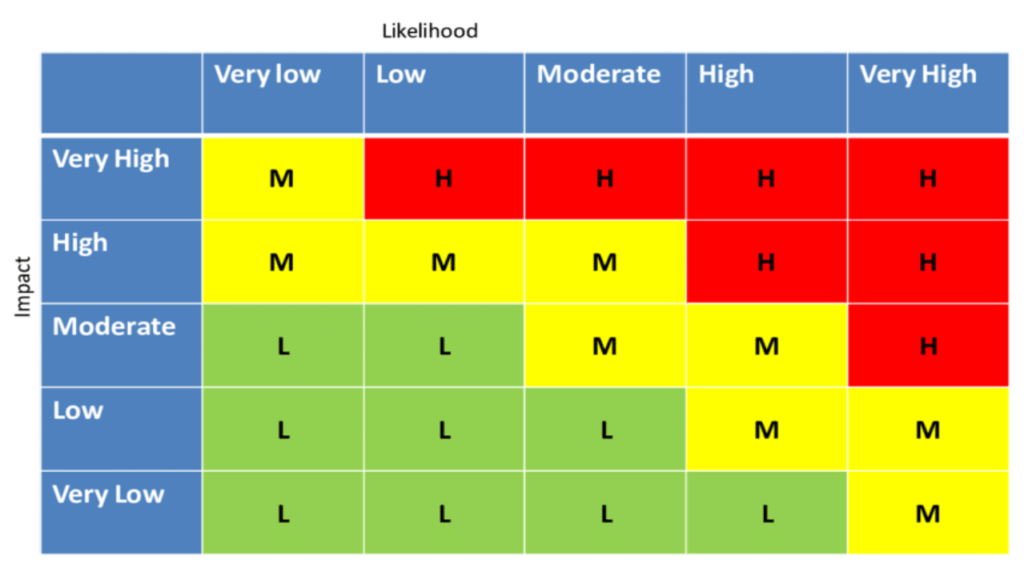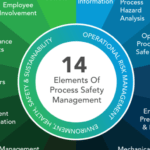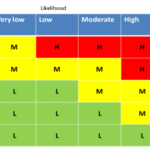
Culture is increasingly at the heart of today’s biggest corporate scandals. Harassment at CBS? Fueled by a culture of sexism. Wells Fargo’s fake accounts? Driven by a leadership team that believed in performance-at-all costs and led others to believe in it, too. Toshiba’s accounting scandal? Determined by investigators to be the result of a “corporate culture in which management decisions could not be challenged.”
Often described as a company’s most precious asset—the “X factor” that sets it apart–culture can just as easily be an organization’s biggest liability. When unattended to, it takes on a life of its own, often deviating further and further from its intended form until crisis strikes and inquiries proliferate. In today’s world of extreme transparency, it’s only a matter of time before what’s broken on the inside is revealed to the outside. Not only do unhealthy cultures demoralize employees; they alienate customers, ruin reputation, and destroy value.
Despite this, few companies approach culture with the same vigilance they apply to identifying and mitigating financial, operational, or market risk. Consequently, they fail to account for the biggest risk of all—that introduced daily by the individual actions and decisions of thousands of employees who may or may not have bought into the company’s value system. We argue that a holistic approach to managing risk requires diligent cultural stewardship and the same degree of urgency, attentiveness, and investment that is applied to issues of cybersecurity, artificial intelligence, or any other business threat.
According to Weber Shandwick’s recent research, only one in five employees globally strongly agrees that their employer creates a good culture, revealing a clear opportunity for improvement.
What might a proactive, risk-management approach to culture look like? Consider taking these steps on an ongoing basis but particularly during times of rapid growth, acquisitions, or financial underperformance, when cultural norms are often being formally and informally renegotiated.
Align Employees Around Shared Behavioral Expectations, And Communicate Them Often
While onboarding, mentoring, and other programs can help to acculturate new hires, the best compass for employee behavior is a clearly articulated set of core values and behaviors that are modeled, reinforced, and rewarded without fail. They provide a reference point, act as a filter in everyday decision-making, and align the entire organization around a shared set of expectations.
At Salesforce, for example, the alignment process starts at the top with co-CEOs Marc Benioff and Keith Block defining their “V2MOMs,” as they’re referred to internally. This framework allows them to record their vision, values, methods, obstacles and measures for the year to come. All employees then follow suit, completing their own V2MOMs and ensuring not only that what they do is consistent with the company’s strategy, but that how they do it aligns with the company’s values.
Regularly Perform A Culture Health Check
Once values and behaviors are in place, companies must assess themselves and monitor other indicators of cultural risk. A quarterly pulse check on culture that tracks the categories below, along with other data from human resources and legal, such as complaints filed and investigations pending, can help organizations spot and proactively address cultural vulnerabilities. Culture health checks should assess:
- Tone at the top. A leadership team that doesn’t “walk the talk” or looks the other way gives bad behavior a tacit endorsement.
- Hierarchy. Over-dependence on chains of command results in a lack of empowerment and accountability at all levels.
- Speed. Pressure to deliver on business objectives quickly can lead to cutting corners at best, and significant violations and losses at worst.
- Communication. Inadequate communication leaves too much to individual interpretation, opening the door for misunderstanding and non-compliance.
- Accountability. Companies that do little to respond to complaints or enforce consequences send the message that poor behavior is tolerated, and perhaps even rewarded.
- Bias. When diverse viewpoints aren’t respected and employees don’t feel included, harassment, incivility, and discrimination often result.
Some companies or organizations are predisposed to certain cultural risks based on their workforce composition, size, industry, or location. A sports organization that has to be cautious about gender discrimination, or a startup with an informal culture that leads employees to be too comfortable with inappropriate behavior are examples that come to mind. Developing a custom scorecard ensures the indicators most important to your organization are being tracked. These scorecards should be shared with the board on a regular basis.
That said, even the best assessments don’t tell the full story of organizational culture. Studies show that inappropriate behavior is most likely to occur in informal or non-public settings—after hours, online, or behind closed doors. This makes being in and around the business (often referred to as “management by walking around”) in unstructured moments and following internal social media conversations a critical component of a culture health check. This is something in which board members can also take part.
Boards generally have been playing a stronger role in cultural governance since the 2007-2008 financial crisis, and in some countries are now held accountable by regulators for oversight of corporate culture. Even if only a handful of leaders in your organization interact with the board, it’s important to recognize that the quality of board engagement is attracting more interest—not only from regulators and investors, but from customers, partners, competitors, and of course employees and prospects.
Make Cultural Stewardship A Part Of Everyone’s Job
The task of mitigating cultural risk takes time and effort—and requires a long-term commitment, honored by all. There is no single owner; the recent rise of the chief culture officer role at organizations like Google, WeWork, and United Way is not an opportunity for others to relinquish responsibility. Employees who take cultural stewardship seriously are not afraid to speak up, to be part of a risk-alert workforce that sounds the alarm on countercultural behaviors when they see them.
Many companies find value in culture ambassador programs that invite employees at all levels to play a role in modeling the company’s values and rewarding the others for doing the same. Once cited in every article on corporate culture (although less so lately), Zappos does this effectively through peer-to-peer recognition programs that allow employees to nominate each other for a $50 bonus or for the Hero Award—which comes with a superhero cape and a parade through the office—when they demonstrate a core value.
Act—Visibly, Regularly, And Credibly
Beyond a supportive C-suite and a willing workforce, driving any type of cultural change often involves a full-scale change management program including leadership alignment, manager enablement, communications, training, and various accountability mechanisms to modify behavior.
This was the case for one of our clients whose new CEO inherited the top job in the middle of a culture crisis that put consumers at risk. Taking swift action, the CEO engaged a third party to conduct a thorough investigation, made key leadership changes, launched an internal campaign to encourage employees to flag issues, created a stronger quality assurance organization and implemented a culture-monitoring capability. This multi-pronged approach helped reset cultural norms and resurrect a values system that had lost its relevance and intended effect over time.
A comprehensive approach championed by the CEO is essential when change is implemented proactively as well. This was the case at another of our clients, Stanley Black & Decker, a 175-year-old brand that is transforming itself under the leadership of CEO Jim Loree. When Loree took the helm in 2016, he wanted to ensure that the manufacturer would not suffer from the complacency, inward focus, or lack of humility that can affect legacy companies. He and his team spent the first year involving the entire workforce in the development of the new purpose statement (“for those who make the world”) and building adaptive leadership skills and a multi-channel engagement plan to support it. Asked to describe the culture of this diversified industrial, Loree today says: “We are bold and agile, yet thoughtful and disciplined.” It’s a mantra that employees have embraced, connecting vision to results.
For most companies, taking action not only involves introducing new measures but also removing long-time roadblocks—whatever it is that has kept employees from living the company’s values. According to one report, more than half of companies reviewed their sexual-harassment policies in the months following the start of the #MeToo movement. Others began providing unconscious-bias training, adopting “blind” recruiting practices, and creating safe spaces for tough conversations.
When it comes to culture, acting is important but acting visibly is even more important. Your stakeholders need to see firsthand your commitment to your values. It brings peace of mind to customers, partners, and other stakeholders to know that culture is a priority and, for many companies, it serves as a form of accountability, incentivizing them to act in alignment with their values, both privately and publicly.
Sarah Clayton is executive vice president at United Minds, a Weber Shandwick consultancy. John Wisdom is senior vice president for the global corporate practice at Weber Shandwick
Source: https://qz.com




